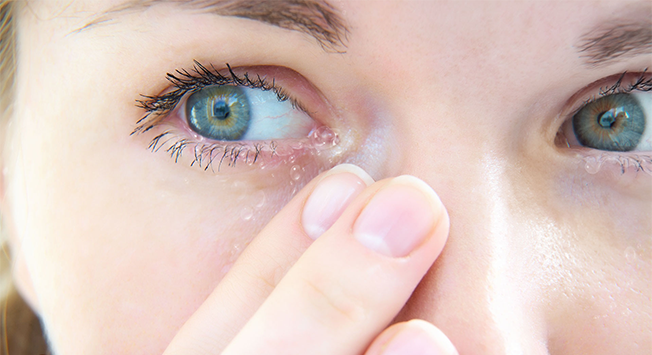
Eye Diseases, Prima Medical Center Saigon
What Are Blocked Tear Ducts?
21 August, 2024
Prima Saigon Eye Hospital: You need tears for a lot more than crying. They flow across the surface of your eyes to clean and moisten them, then they leave your eyes through a system of tiny drainage tubes that run along your nose.

Prima Saigon Eye Hospital: If your eyes are watery and irritated, get them checked to find out whether it’s a blocked tear duct.
Sometimes these tubes can get narrowed or blocked, which prevents the tears from draining out of your eyes. This extra fluid can leave your eyes watery.
If your eyes are watery and irritated, get them checked to find out whether it’s a blocked tear duct. If it is, your eye doctor has things he can do to open up the blockage and help your tears flow normally again. If the portion of the tear duct in the bone of the nose is blocked, it can cause a serious infection of the tear sac called dacryocystitis.
What Are Tear Ducts?
Tear ducts are like tiny tunnels that your tears pass through. They’re part of the drainage system that goes from your eyes to your throat. Glands inside your eyelids and the white part of your eyes constantly release tears into your eyes. As you blink, they drain out. They exit through two small holes called puncta in the upper and lower inside corners of your eyelids, next to your nose.
Causes of Blockage
Sometimes babies are born with blocked tear ducts. This happens because a piece of tissue that covers the duct doesn’t open up at birth like it should. It will usually open on its own within a few months.
Less often, tear ducts get blocked because the tear drainage system didn’t form correctly in the womb.
In adults, tear ducts can get blocked for lots of reasons:
In adults, a blocked tear duct is usually the result of an injury, nasal or sinus problems, or thickening of the tear duct lining. Symptoms include excessive tearing, and if there’s an infection, redness and swelling around the eye or nose, and mucus in the corners of the eyes.
- The holes in the corners of the eyes, the puncta, narrow due to age.
- Trauma cuts the drainage duct.
- A broken nose or other injury leaves scar tissue that presses on the tear duct.
- Small, rounded growths called polyps form in the nose and block the duct.
- An infection in the eye or nose causes swelling around the tear duct. Conjunctivitis (pinkeye), an infection of the conjunctiva, the clear membrane that covers the eye, is one common infection that can cause blocked tear ducts.
- A tumor presses on the drainage system.
- Sinus surgery damages the tear ducts or the holes that drain to them.
- Eye drops to treat glaucoma make the conjunctiva and the tear ducts swell.
- Radioactive iodine and chemotherapy treatment for cancer cause swelling in the tear ducts.
Treatments
There are different ways to open a blocked tear duct. They range from massage to procedures that remove the blockage.
- Massage. Rubbing the corners of your, or your baby’s, eyes twice a day can release fluid and open up the tissue that covers the tear ducts.
- Tear duct probing. If a tear duct doesn’t open on its own by your baby’s first birthday, the doctor can place a thin probe into the puncta to open the tissue covering the duct.
Discuss all your treatment options with our doctor @ Prima Saigon Eye Hospital. Ask questions so you understand how the procedure will help and what side effects it might cause.
- Balloon catheter dilation. The doctor threads a thin tube called a catheter into the tear duct. A pump inflates a balloon at the end of the tube to widen the duct.
- Intubation. A tiny tube is threaded through the tear ducts to the inside of the nose. The tubes stay in place for 3 to 6 months to open up the ducts and let tears drain.
- Surgery. Dacryocystorhinostomy is a type of surgery to bypass the blocked tear duct in adults who haven’t gotten better with other treatments. It creates a new route for tears to drain from the eye.
Dr AN Trinh, Head of General Ophthalmology
If you need an eye assessment, please have a visit to Prima Saigon Eye Hospital
- Address: 27 Ky Dong St, District 3, HCMC
- Website: https://primahealth.vn/en/
- Business Hours: 07:30 – 17:00 from Monday – Saturday
- HOTLINE: 0919-209-039 or 1900 – 9115
Prima Saigon Eye Hospital recommends that clients should reserve their intended consultation at least three days before their visit for convenience and less waiting time.
Prima Saigon Eye Hospital: You need tears for a lot more than crying. They flow across the surface of your eyes to clean and moisten them, then they leave your eyes through a system of tiny drainage tubes that run along your nose.

Prima Saigon Eye Hospital: If your eyes are watery and irritated, get them checked to find out whether it’s a blocked tear duct.
Sometimes these tubes can get narrowed or blocked, which prevents the tears from draining out of your eyes. This extra fluid can leave your eyes watery.
If your eyes are watery and irritated, get them checked to find out whether it’s a blocked tear duct. If it is, your eye doctor has things he can do to open up the blockage and help your tears flow normally again. If the portion of the tear duct in the bone of the nose is blocked, it can cause a serious infection of the tear sac called dacryocystitis.
What Are Tear Ducts?
Tear ducts are like tiny tunnels that your tears pass through. They’re part of the drainage system that goes from your eyes to your throat. Glands inside your eyelids and the white part of your eyes constantly release tears into your eyes. As you blink, they drain out. They exit through two small holes called puncta in the upper and lower inside corners of your eyelids, next to your nose.
Causes of Blockage
Sometimes babies are born with blocked tear ducts. This happens because a piece of tissue that covers the duct doesn’t open up at birth like it should. It will usually open on its own within a few months.
Less often, tear ducts get blocked because the tear drainage system didn’t form correctly in the womb.
In adults, tear ducts can get blocked for lots of reasons:
In adults, a blocked tear duct is usually the result of an injury, nasal or sinus problems, or thickening of the tear duct lining. Symptoms include excessive tearing, and if there’s an infection, redness and swelling around the eye or nose, and mucus in the corners of the eyes.
- The holes in the corners of the eyes, the puncta, narrow due to age.
- Trauma cuts the drainage duct.
- A broken nose or other injury leaves scar tissue that presses on the tear duct.
- Small, rounded growths called polyps form in the nose and block the duct.
- An infection in the eye or nose causes swelling around the tear duct. Conjunctivitis (pinkeye), an infection of the conjunctiva, the clear membrane that covers the eye, is one common infection that can cause blocked tear ducts.
- A tumor presses on the drainage system.
- Sinus surgery damages the tear ducts or the holes that drain to them.
- Eye drops to treat glaucoma make the conjunctiva and the tear ducts swell.
- Radioactive iodine and chemotherapy treatment for cancer cause swelling in the tear ducts.
Treatments
There are different ways to open a blocked tear duct. They range from massage to procedures that remove the blockage.
- Massage. Rubbing the corners of your, or your baby’s, eyes twice a day can release fluid and open up the tissue that covers the tear ducts.
- Tear duct probing. If a tear duct doesn’t open on its own by your baby’s first birthday, the doctor can place a thin probe into the puncta to open the tissue covering the duct.
Discuss all your treatment options with our doctor @ Prima Saigon Eye Hospital. Ask questions so you understand how the procedure will help and what side effects it might cause.
- Balloon catheter dilation. The doctor threads a thin tube called a catheter into the tear duct. A pump inflates a balloon at the end of the tube to widen the duct.
- Intubation. A tiny tube is threaded through the tear ducts to the inside of the nose. The tubes stay in place for 3 to 6 months to open up the ducts and let tears drain.
- Surgery. Dacryocystorhinostomy is a type of surgery to bypass the blocked tear duct in adults who haven’t gotten better with other treatments. It creates a new route for tears to drain from the eye.
Dr AN Trinh, Head of General Ophthalmology
If you need an eye assessment, please have a visit to Prima Saigon Eye Hospital
- Address: 27 Ky Dong St, District 3, HCMC
- Website: https://primahealth.vn/en/
- Business Hours: 07:30 – 17:00 from Monday – Saturday
- HOTLINE: 0919-209-039 or 1900 – 9115
Prima Saigon Eye Hospital recommends that clients should reserve their intended consultation at least three days before their visit for convenience and less waiting time.



